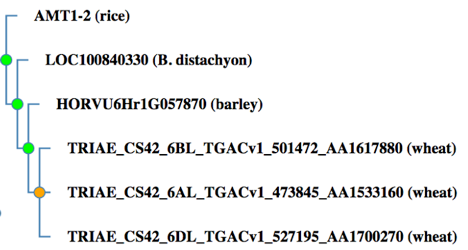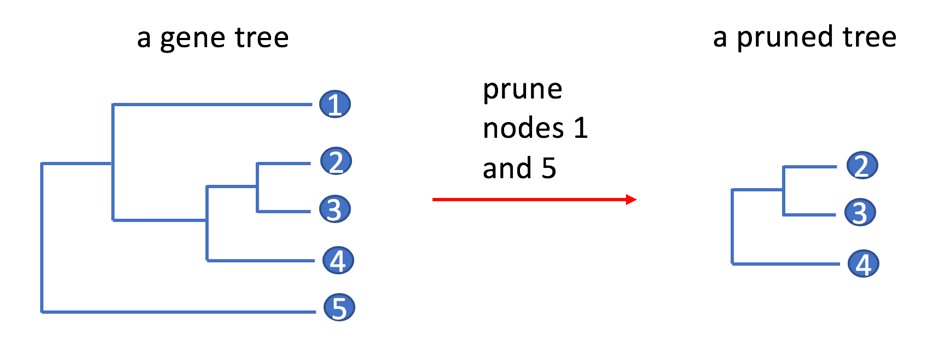Page History
...
Several polyploid organisms are included in PhyloGenes. Just like genes from a single genome in a diploid, genes from N (N>1) genomes of a polypoid are treated as individual genes. For example, the bread wheat is a hexaploid, which has three genomes A, B and D. GeneX is present in all three genomes therefore there are three copies of GeneX in bread wheat, GeneX-A, GeneX-B and GeneX-D. Given high sequence similarities shared among the three genes, GeneX-A, GeneX-B and GeneX-D are very likely to be found in the same gene tree shown as descendants of a gene duplication event.
How does tree pruning work? Does it change the topology of a tree?
Gene families in PhyloGenes are pruned versions of PANTHER gene families. They contain only genes from selected plant genomes and non-plant model organisms. Genes from other PANTHER genomes were removed (pruned) from the PANTHER gene families and phylogenetic trees. The pruning process does not alter the tree topology of a gene family. Given a PANTHER gene tree, the process simply removes a leaf node (gene) if the gene is NOT from any of the selected organisms.
My gene is not found in PhyloGenes. Why?
There are two possibilities. It could be that the organism of your gene is not included in the PANTHER pipeline <link to FAQ above>. The list of genomes that are included PANTHER and PhyloGenes can be found here <link>. Alternatively, even if the organism is included in PANTHER and PhyloGenes, not all genes of the genome are part of a gene family. Some genes don’t meet the criteria of being part of a gene family. Statistics covering the current release can be found here <link>.

